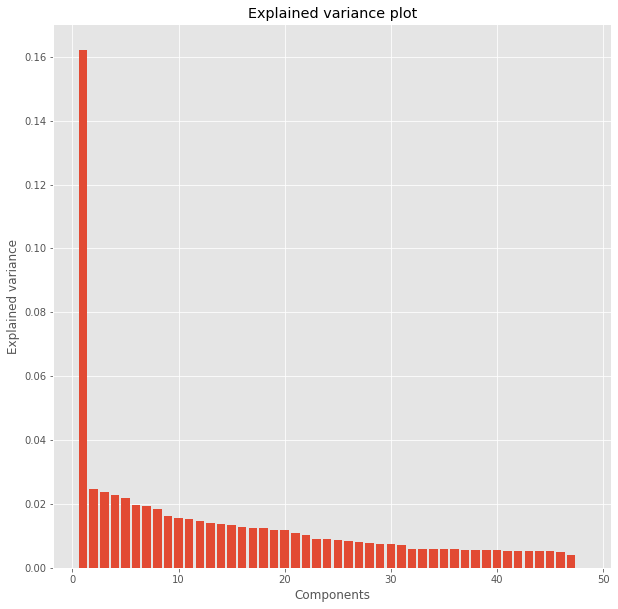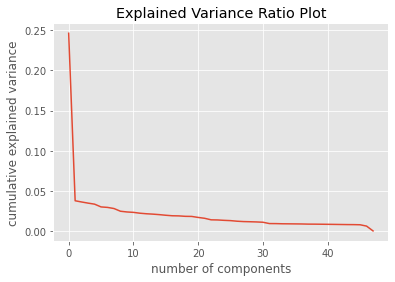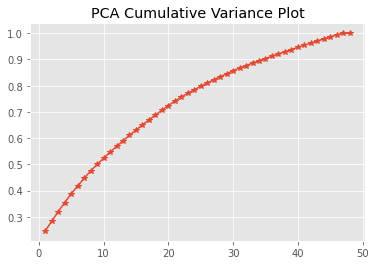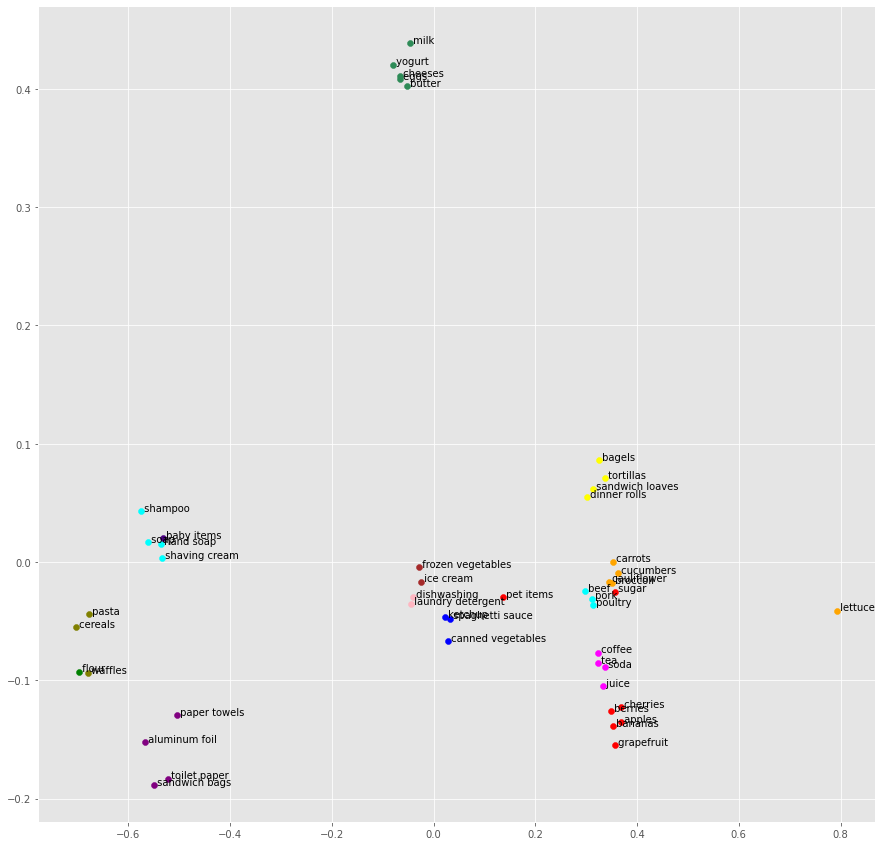Item Clustering by User Purchase History
Unsupervised Learning technique to cluster items together that would replace old and manually created categories.

We have two datasets:
- item_to_id which has information on the item and it’s corresponding ID to uniquely identify each product.
- purchase_history which contains information on user’s purchase history. The products users tend to buy together.
We can use these datasets to come up with interesting insights that may help expand the business.
Business Questions:
Target Audience
- Identify top 10 customers who bought the most items overall
- For each item, identify the customer who bought that product the most
This will help us identify our most valuable and loyal customers who can then advocate for our business.
Cluster Items
- Cluster items based on user co-purchase history. That is, create clusters of products that have the highest probability of being bought together. The goal of this is to replace the old/manually created categories with these new ones. Each item can belong to just one cluster.
import re
from collections import Counter
import itertools
import numpy as np
import pandas as pd
from sklearn.preprocessing import normalize
from sklearn.decomposition import PCA
from sklearn.cluster import KMeans
from sklearn.metrics import silhouette_score
from sklearn.metrics.pairwise import cosine_similarity
import matplotlib.pyplot as plt
plt.style.use('ggplot')
%matplotlib inline
Load and Inspect Data
There are 48 unique items in the inventory.
item = pd.read_csv("item_to_id.csv")
item.head()
item.sort_values(by = 'Item_id')
| Item_name | Item_id | |
|---|---|---|
| 18 | sugar | 1 |
| 35 | lettuce | 2 |
| 47 | pet items | 3 |
| 46 | baby items | 4 |
| 20 | waffles | 5 |
| 23 | poultry | 6 |
| 41 | sandwich bags | 7 |
| 15 | butter | 8 |
| 3 | soda | 9 |
| 32 | carrots | 10 |
| 16 | cereals | 11 |
| 42 | shampoo | 12 |
| 7 | bagels | 13 |
| 12 | eggs | 14 |
| 40 | aluminum foil | 15 |
| 13 | milk | 16 |
| 24 | beef | 17 |
| 36 | laundry detergent | 18 |
| 45 | shaving cream | 19 |
| 29 | grapefruit | 20 |
| 11 | cheeses | 21 |
| 21 | frozen vegetables | 22 |
| 1 | tea | 23 |
| 38 | paper towels | 24 |
| 28 | cherries | 25 |
| 9 | spaghetti sauce | 26 |
| 37 | dishwashing | 27 |
| 8 | canned vegetables | 28 |
| 44 | hand soap | 29 |
| 17 | flour | 30 |
| 19 | pasta | 31 |
| 30 | apples | 32 |
| 39 | toilet paper | 33 |
| 6 | tortillas | 34 |
| 43 | soap | 35 |
| 22 | ice cream | 36 |
| 5 | dinner rolls | 37 |
| 2 | juice | 38 |
| 4 | sandwich loaves | 39 |
| 27 | berries | 40 |
| 10 | ketchup | 41 |
| 34 | cucumbers | 42 |
| 0 | coffee | 43 |
| 31 | broccoli | 44 |
| 33 | cauliflower | 45 |
| 26 | bananas | 46 |
| 25 | pork | 47 |
| 14 | yogurt | 48 |
purchase = pd.read_csv('purchase_history.csv')
purchase.head()
| user_id | id | |
|---|---|---|
| 0 | 222087 | 27,26 |
| 1 | 1343649 | 6,47,17 |
| 2 | 404134 | 18,12,23,22,27,43,38,20,35,1 |
| 3 | 1110200 | 9,23,2,20,26,47,37 |
| 4 | 224107 | 31,18,5,13,1,21,48,16,26,2,44,32,20,37,42,35,4... |
Data Summary
There are 39,474 purchases made by 24,885 unique customers. Data has no missing values.
item.info()
<class 'pandas.core.frame.DataFrame'>
RangeIndex: 48 entries, 0 to 47
Data columns (total 2 columns):
# Column Non-Null Count Dtype
--- ------ -------------- -----
0 Item_name 48 non-null object
1 Item_id 48 non-null int64
dtypes: int64(1), object(1)
memory usage: 896.0+ bytes
purchase.info()
<class 'pandas.core.frame.DataFrame'>
RangeIndex: 39474 entries, 0 to 39473
Data columns (total 2 columns):
# Column Non-Null Count Dtype
--- ------ -------------- -----
0 user_id 39474 non-null int64
1 id 39474 non-null object
dtypes: int64(1), object(1)
memory usage: 616.9+ KB
len(purchase.user_id.unique())
24885
purchase.isnull().sum()
user_id 0
id 0
dtype: int64
Data Pre-processing
In order to get any meaningful insights from the dataset, we will have to some pre-processing. We will create a frequency table for each item by every user. If a user buys a specific item 2 times we will have (user,item) = 2 in the table.
def count_items(df):
ids = df['id'].str.split(',').sum()
id_list = [0 for i in range(1,49)]
for i in ids:
id_list[int(i)-1]+=1
return pd.Series(id_list,index = list(range(1,49)))
user_item_cnt = purchase.groupby('user_id').apply(count_items)
user_item_cnt.head()
| 1 | 2 | 3 | 4 | 5 | 6 | 7 | 8 | 9 | 10 | ... | 39 | 40 | 41 | 42 | 43 | 44 | 45 | 46 | 47 | 48 | |
|---|---|---|---|---|---|---|---|---|---|---|---|---|---|---|---|---|---|---|---|---|---|
| user_id | |||||||||||||||||||||
| 47 | 0 | 1 | 1 | 1 | 0 | 0 | 0 | 0 | 0 | 0 | ... | 0 | 0 | 0 | 0 | 0 | 1 | 1 | 1 | 0 | 0 |
| 68 | 0 | 0 | 0 | 0 | 0 | 1 | 0 | 0 | 0 | 1 | ... | 1 | 0 | 0 | 1 | 0 | 0 | 0 | 0 | 0 | 0 |
| 113 | 0 | 0 | 1 | 0 | 0 | 0 | 0 | 0 | 1 | 0 | ... | 0 | 0 | 0 | 0 | 1 | 0 | 0 | 1 | 0 | 0 |
| 123 | 0 | 0 | 0 | 1 | 0 | 0 | 0 | 0 | 0 | 1 | ... | 0 | 0 | 0 | 0 | 0 | 0 | 0 | 0 | 0 | 0 |
| 223 | 1 | 1 | 0 | 0 | 0 | 1 | 0 | 0 | 0 | 0 | ... | 0 | 0 | 1 | 0 | 0 | 0 | 1 | 0 | 0 | 0 |
5 rows × 48 columns
Top 10 customers who bought the most items
user_count = user_item_cnt.sum(axis = 1).sort_values(ascending = False).reset_index().rename(columns = {0:'item_cnt'})
user_count.head(10)
| user_id | item_cnt | |
|---|---|---|
| 0 | 269335 | 72 |
| 1 | 367872 | 70 |
| 2 | 599172 | 64 |
| 3 | 397623 | 64 |
| 4 | 377284 | 63 |
| 5 | 1485538 | 62 |
| 6 | 917199 | 62 |
| 7 | 718218 | 60 |
| 8 | 653800 | 60 |
| 9 | 828721 | 58 |
For each item, the customer who bought that product the most
item_max = user_item_cnt.apply(lambda s : pd.Series([s.argmax(),s.max()],index = ['max_user','max_cnt']))
item_max = item_max.transpose()
item_max.index.name = 'Item_id'
item_max
| max_user | max_cnt | |
|---|---|---|
| Item_id | ||
| 1 | 512 | 4 |
| 2 | 512 | 5 |
| 3 | 2552 | 4 |
| 4 | 92 | 3 |
| 5 | 3605 | 3 |
| 6 | 5555 | 4 |
| 7 | 2926 | 3 |
| 8 | 2493 | 3 |
| 9 | 4445 | 4 |
| 10 | 10238 | 4 |
| 11 | 6111 | 3 |
| 12 | 9261 | 3 |
| 13 | 10799 | 4 |
| 14 | 2855 | 3 |
| 15 | 2356 | 3 |
| 16 | 1175 | 3 |
| 17 | 6085 | 4 |
| 18 | 15193 | 5 |
| 19 | 512 | 3 |
| 20 | 14623 | 4 |
| 21 | 14597 | 4 |
| 22 | 19892 | 4 |
| 23 | 15251 | 5 |
| 24 | 3154 | 3 |
| 25 | 1094 | 4 |
| 26 | 16026 | 4 |
| 27 | 15840 | 4 |
| 28 | 3400 | 4 |
| 29 | 6565 | 4 |
| 30 | 375 | 2 |
| 31 | 4803 | 3 |
| 32 | 1771 | 4 |
| 33 | 21668 | 3 |
| 34 | 5085 | 4 |
| 35 | 7526 | 3 |
| 36 | 4445 | 4 |
| 37 | 749 | 4 |
| 38 | 4231 | 4 |
| 39 | 9918 | 5 |
| 40 | 634 | 4 |
| 41 | 2192 | 4 |
| 42 | 1303 | 4 |
| 43 | 16510 | 4 |
| 44 | 512 | 4 |
| 45 | 19857 | 5 |
| 46 | 20214 | 4 |
| 47 | 6419 | 4 |
| 48 | 5575 | 3 |
We were able to get all the users who bought maximum number of each item.Identifying a target audience provides a clear focus of whom your business will serve and why those consumers need your goods or services. Determining this information also keeps a target audience at a manageable level.
Clustering of Items
Item-Item Similiarity Matrix
To cluster items we would first create a cosine similarity matrix.
Cosine similarity is a metric that can be used to determine how similar the documents/terms are irrespective of their magnitude.
Mathematically, it measures the cosine of the angle between two vectors projected in a multi-dimensional space.When plotted on a multi-dimensional space, where each dimension corresponds to a word , the cosine similarity captures the orientation (the angle) of the terms and not the magnitude. If you want the magnitude, compute the Euclidean distance instead.
The cosine similarity is advantageous because even if the two similar items are far apart by the Euclidean distance because of the size (like, the word ‘fruit’ was purchased 10 times by 1 user and 1 time by other) they could still have a smaller angle between them. Smaller the angle, higher the similarity.
user_item_cnt.head()
| 1 | 2 | 3 | 4 | 5 | 6 | 7 | 8 | 9 | 10 | ... | 39 | 40 | 41 | 42 | 43 | 44 | 45 | 46 | 47 | 48 | |
|---|---|---|---|---|---|---|---|---|---|---|---|---|---|---|---|---|---|---|---|---|---|
| user_id | |||||||||||||||||||||
| 47 | 0 | 1 | 1 | 1 | 0 | 0 | 0 | 0 | 0 | 0 | ... | 0 | 0 | 0 | 0 | 0 | 1 | 1 | 1 | 0 | 0 |
| 68 | 0 | 0 | 0 | 0 | 0 | 1 | 0 | 0 | 0 | 1 | ... | 1 | 0 | 0 | 1 | 0 | 0 | 0 | 0 | 0 | 0 |
| 113 | 0 | 0 | 1 | 0 | 0 | 0 | 0 | 0 | 1 | 0 | ... | 0 | 0 | 0 | 0 | 1 | 0 | 0 | 1 | 0 | 0 |
| 123 | 0 | 0 | 0 | 1 | 0 | 0 | 0 | 0 | 0 | 1 | ... | 0 | 0 | 0 | 0 | 0 | 0 | 0 | 0 | 0 | 0 |
| 223 | 1 | 1 | 0 | 0 | 0 | 1 | 0 | 0 | 0 | 0 | ... | 0 | 0 | 1 | 0 | 0 | 0 | 1 | 0 | 0 | 0 |
5 rows × 48 columns
user_item_cnt_transpose = user_item_cnt.T
similarity = cosine_similarity(user_item_cnt_transpose,user_item_cnt_transpose)
similarity_df = pd.DataFrame(similarity, index=user_item_cnt.columns, columns=user_item_cnt.columns)
similarity_df[:5]
| 1 | 2 | 3 | 4 | 5 | 6 | 7 | 8 | 9 | 10 | ... | 39 | 40 | 41 | 42 | 43 | 44 | 45 | 46 | 47 | 48 | |
|---|---|---|---|---|---|---|---|---|---|---|---|---|---|---|---|---|---|---|---|---|---|
| 1 | 1.000000 | 0.506895 | 0.420145 | 0.296986 | 0.271132 | 0.388250 | 0.271743 | 0.335303 | 0.403690 | 0.390641 | ... | 0.388034 | 0.390286 | 0.358599 | 0.393056 | 0.395696 | 0.396766 | 0.390253 | 0.394998 | 0.392164 | 0.328221 |
| 2 | 0.506895 | 1.000000 | 0.466874 | 0.322744 | 0.285125 | 0.468199 | 0.312200 | 0.390521 | 0.464872 | 0.527894 | ... | 0.462968 | 0.462548 | 0.409401 | 0.529100 | 0.464579 | 0.527325 | 0.521058 | 0.462407 | 0.460257 | 0.380077 |
| 3 | 0.420145 | 0.466874 | 1.000000 | 0.277325 | 0.224537 | 0.358326 | 0.238133 | 0.301868 | 0.362091 | 0.352597 | ... | 0.351093 | 0.368199 | 0.309078 | 0.357794 | 0.351209 | 0.362522 | 0.361922 | 0.354933 | 0.351832 | 0.297972 |
| 4 | 0.296986 | 0.322744 | 0.277325 | 1.000000 | 0.162860 | 0.247414 | 0.166012 | 0.216166 | 0.252662 | 0.258313 | ... | 0.245623 | 0.261272 | 0.210767 | 0.244946 | 0.253282 | 0.253119 | 0.250190 | 0.253835 | 0.260541 | 0.218717 |
| 5 | 0.271132 | 0.285125 | 0.224537 | 0.162860 | 1.000000 | 0.233618 | 0.164699 | 0.203245 | 0.239445 | 0.234254 | ... | 0.235543 | 0.238557 | 0.211006 | 0.238466 | 0.235064 | 0.241835 | 0.238087 | 0.238247 | 0.232387 | 0.188269 |
5 rows × 48 columns
Feature Selection Using PCA
Now that we have the similarity matrix, we can cluster the items based on the cosine similarity score but before that we will use PCA to reduce the dimension of the dataset.
PCA will help us to discover which dimensions in the dataset best maximize the variance of features involved. In addition to finding these dimensions, PCA will also report the explained variance ratio of each dimension — how much variance within the data is explained by that dimension alone.
pca_model = PCA()
items_rotate = pca_model.fit_transform(similarity_df)
items_rotate = pd.DataFrame(items_rotate,index=user_item_cnt.columns,
columns=["pc{}".format(idx+1) for idx in range(item.shape[0])])
items_rotate.head()
| pc1 | pc2 | pc3 | pc4 | pc5 | pc6 | pc7 | pc8 | pc9 | pc10 | ... | pc39 | pc40 | pc41 | pc42 | pc43 | pc44 | pc45 | pc46 | pc47 | pc48 | |
|---|---|---|---|---|---|---|---|---|---|---|---|---|---|---|---|---|---|---|---|---|---|
| 1 | 0.355639 | -0.025103 | -0.051129 | -0.039214 | -0.049529 | 0.003300 | 0.019830 | -0.011458 | 0.084798 | -0.042284 | ... | -0.019760 | -0.012837 | -0.006332 | -0.022289 | -0.002654 | -0.001332 | 0.011263 | -0.026911 | -0.129284 | 5.732095e-17 |
| 2 | 0.793894 | -0.041103 | 0.013244 | -0.009035 | -0.141627 | -0.036540 | -0.114816 | -0.087070 | 0.000959 | -0.035030 | ... | -0.039028 | -0.015895 | -0.027280 | 0.017406 | 0.013680 | 0.004437 | -0.030161 | 0.006713 | 0.379136 | 5.732095e-17 |
| 3 | 0.135668 | -0.029584 | -0.028246 | -0.012556 | -0.013317 | 0.004220 | -0.020503 | -0.050246 | 0.177599 | -0.080864 | ... | 0.020455 | -0.007168 | 0.040652 | 0.004387 | 0.029288 | 0.000224 | 0.009908 | 0.001288 | -0.035429 | 5.732095e-17 |
| 4 | -0.532034 | 0.020259 | -0.022628 | -0.037650 | 0.022756 | -0.046219 | 0.042124 | -0.132828 | 0.651482 | -0.274771 | ... | 0.000133 | 0.002444 | 0.005894 | -0.003617 | -0.005383 | 0.001555 | -0.006114 | 0.007527 | 0.020217 | 5.732095e-17 |
| 5 | -0.678770 | -0.093874 | -0.347623 | -0.232866 | -0.090366 | -0.057124 | -0.018074 | 0.038866 | -0.048059 | -0.014378 | ... | -0.008466 | 0.011890 | 0.002598 | 0.007605 | 0.009321 | -0.003278 | 0.006540 | 0.000677 | 0.023603 | 5.732095e-17 |
5 rows × 48 columns
Dimensionality Reduction
When using principal component analysis, one of the main goals is to reduce the dimensionality of the data — in effect, reducing the complexity of the problem. Dimensionality reduction comes at a cost: Fewer dimensions used implies less of the total variance in the data is being explained. Because of this, the cumulative explained variance ratio is extremely important for knowing how many dimensions are necessary for the problem. We can even visualize the components and variance explained by each of them.
fig = plt.figure(figsize=(10, 10))
plt.bar(range(1,len(pca_model.explained_variance_)+1),pca_model.explained_variance_)
plt.ylabel('Explained variance')
plt.xlabel('Components')
plt.title("Explained variance plot")
Text(0.5, 1.0, 'Explained variance plot')

plt.plot(pca_model.explained_variance_ratio_)
plt.xlabel('number of components')
plt.ylabel('cumulative explained variance')
plt.title("Explained Variance Ratio Plot")
plt.show()

# show the total variance which can be explained by first K principle components
explained_variance_by_k = pca_model.explained_variance_ratio_.cumsum()
plt.plot(range(1,len(explained_variance_by_k)+1),explained_variance_by_k,marker="*")
plt.title("PCA Cumulative Variance Plot")
Text(0.5, 1.0, 'PCA Cumulative Variance Plot')

We can see 35 principal components can explain upto 90% variance in the dataset.
sum(pca_model.explained_variance_ratio_[:35])
0.9036104968698064
K-means Clustering
We are going to use K-means clustering to identify the clusters for our items.
Advantages of k-means
- Relatively simple to implement.
- Scales to large data sets.
- Guarantees convergence.
- Easily adapts to new examples.
- Generalizes to clusters of different shapes and sizes, such as elliptical clusters.
Random Initialization: In some cases, if the initialization of clusters is not appropriate, K-Means can result in arbitrarily bad clusters. This is where K-Means++ helps. It specifies a procedure to initialize the cluster centers before moving forward with the standard k-means clustering algorithm. It will randomly choose a centroid, calculate the distance of every point from it and the point which has the maximum distance from the centroid will be chosen as the second centroid.
Creating Clusters
When the number of clusters is not known a priori like in this problem, there is no guarantee that a given number of clusters best segments the data, since it is unclear what structure exists in the data — if any. However, we can quantify the “goodness” of a clustering by calculating each data point’s silhouette coefficient and inertia.
The silhouette coefficient for a data point measures how similar it is to its assigned cluster from -1 (dissimilar) to 1 (similar). Calculating the mean silhouette coefficient provides for a simple scoring method of a given clustering.
Inertia: It is defined as the mean squared distance between each instance and its closest centroid. Logically, as per the definition lower the inertia better the model.
#We will use 25 pca components
items_filter = items_rotate.values[:,:25]
clusters = range(5, 20)
inertias = []
silhouettes = []
for n_clusters in clusters:
model = KMeans(n_clusters=n_clusters, init='k-means++', random_state=42, n_jobs=1)
label = model.fit_predict(items_filter)
inertias.append(model.inertia_)
silhouettes.append(silhouette_score(items_filter, label))
fig, ax = plt.subplots(nrows=1, ncols=2, figsize=(18, 6))
ax[0].plot(clusters, inertias, 'o-', label='Sum of Squared Distances')
ax[0].grid(True)
ax[1].plot(clusters, silhouettes, 'o-', label='Silhouette Coefficient')
ax[1].grid(True)
plt.legend(fontsize=12)
plt.tight_layout()
plt.show()

Silhouette coefficient plateaued after 14 so 14 clusters look optimal.
Cluster Visualization
We can see 14 clusters are created and items are clearly sorted. We were able to reduce dimensionality and ended up using just 25 features.
Items are sorted as bakery items(Cluster 4) such as bagels
,tortillas
,dinner rolls
,sandwich loaves and canned goods(cluster 1) such as spaghetti sauce
,canned vegetables
,ketchup. Similarly, we have other clusters as well.
def show_clusters(items_rotated,labels):
"""
plot and print clustering result
"""
fig = plt.figure(figsize=(15, 15))
colors = itertools.cycle (["blue","green","red","cyan","yellow","purple","orange","olive","seagreen","magenta","brown","lightpink","indigo","aqua","teal"])
grps = items_rotated.groupby(labels)
for label,grp in grps:
#print(label,grp)
plt.scatter(grp.pc1,grp.pc2,c=next(colors),label = label)
print("*********** Label [{}] ***********".format(label))
print(grp.index)
for j in grp.index:
names = item[item['Item_id'] == j]["Item_name"].to_string(index = False)
print(j,names)
# annotate
for itemid in items_rotated.index:
x = items_rotated.loc[itemid,"pc1"]
y = items_rotated.loc[itemid,"pc2"]
name = item[item['Item_id'] == itemid]["Item_name"].to_string(index = False)
plt.text(x,y,name)
def cluster(n_clusters,n_components=48):
"""
n_components=K, means use first K principle components in the clustering
n_clusters: the number of clusters we want to cluster
"""
print("first {} PC explain {:.1f}% variances".format(n_components,
100 * sum(pca_model.explained_variance_ratio_[:n_components])))
kmeans_model = KMeans(n_clusters=n_clusters,init='k-means++', random_state=42, n_jobs=1)
kmeans_model.fit(items_rotate.values[:, :n_components])
# display results
show_clusters(items_rotate, kmeans_model.labels_)
cluster(n_clusters = 14,n_components=25)
first 25 PC explain 79.8% variances
*********** Label [0] ***********
Int64Index([26, 28, 41], dtype='int64')
26 spaghetti sauce
28 canned vegetables
41 ketchup
*********** Label [1] ***********
Int64Index([30], dtype='int64')
30 flour
*********** Label [2] ***********
Int64Index([1, 3, 20, 25, 32, 40, 46], dtype='int64')
1 sugar
3 pet items
20 grapefruit
25 cherries
32 apples
40 berries
46 bananas
*********** Label [3] ***********
Int64Index([12, 19, 29, 35], dtype='int64')
12 shampoo
19 shaving cream
29 hand soap
35 soap
*********** Label [4] ***********
Int64Index([13, 34, 37, 39], dtype='int64')
13 bagels
34 tortillas
37 dinner rolls
39 sandwich loaves
*********** Label [5] ***********
Int64Index([7, 15, 24, 33], dtype='int64')
7 sandwich bags
15 aluminum foil
24 paper towels
33 toilet paper
*********** Label [6] ***********
Int64Index([2, 10, 42, 44, 45], dtype='int64')
2 lettuce
10 carrots
42 cucumbers
44 broccoli
45 cauliflower
*********** Label [7] ***********
Int64Index([5, 11, 31], dtype='int64')
5 waffles
11 cereals
31 pasta
*********** Label [8] ***********
Int64Index([8, 14, 16, 21, 48], dtype='int64')
8 butter
14 eggs
16 milk
21 cheeses
48 yogurt
*********** Label [9] ***********
Int64Index([9, 23, 38, 43], dtype='int64')
9 soda
23 tea
38 juice
43 coffee
*********** Label [10] ***********
Int64Index([22, 36], dtype='int64')
22 frozen vegetables
36 ice cream
*********** Label [11] ***********
Int64Index([18, 27], dtype='int64')
18 laundry detergent
27 dishwashing
*********** Label [12] ***********
Int64Index([4], dtype='int64')
4 baby items
*********** Label [13] ***********
Int64Index([6, 17, 47], dtype='int64')
6 poultry
17 beef
47 pork
